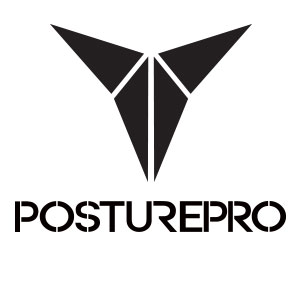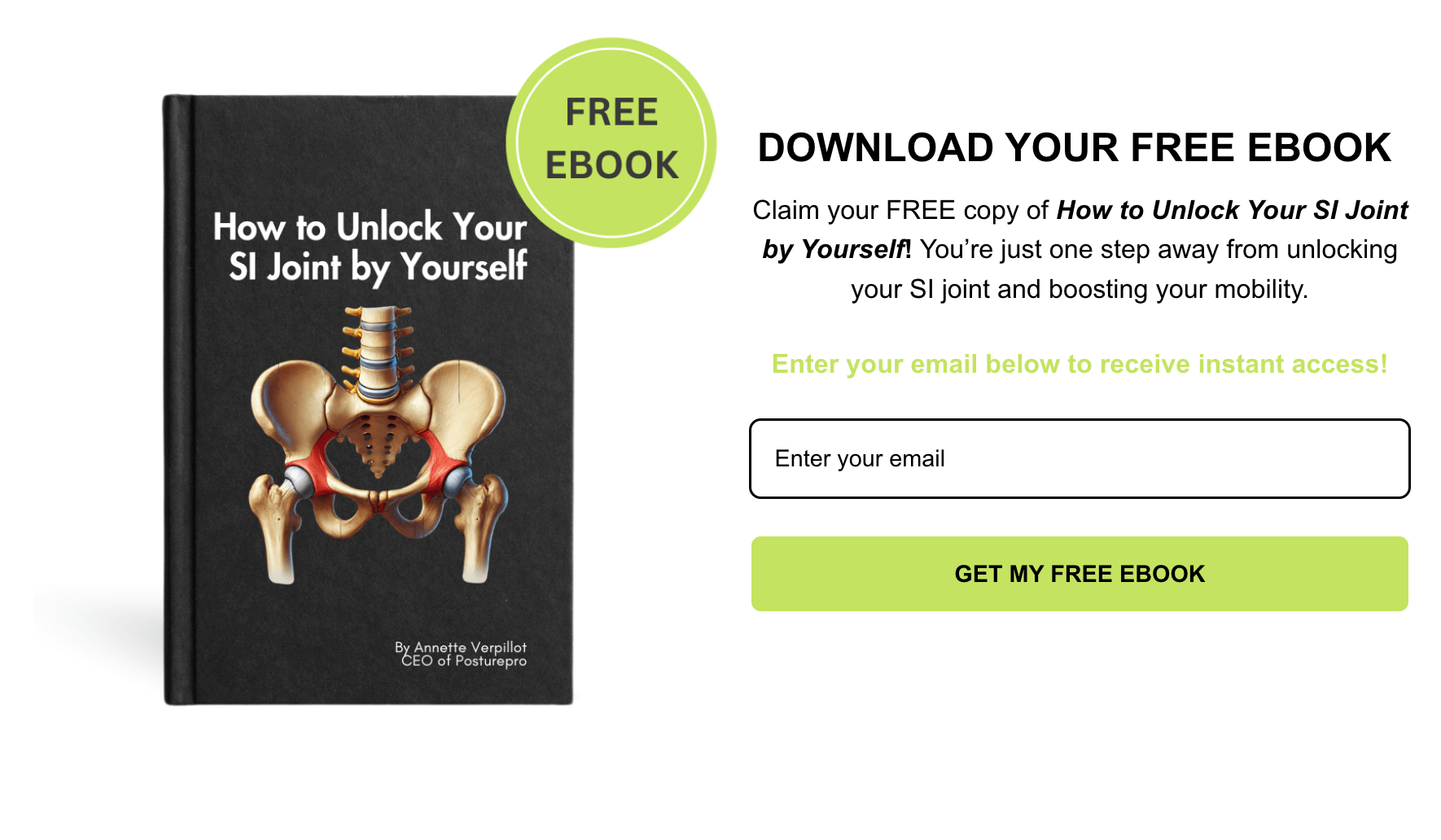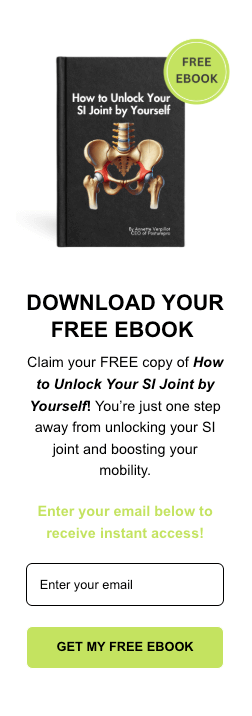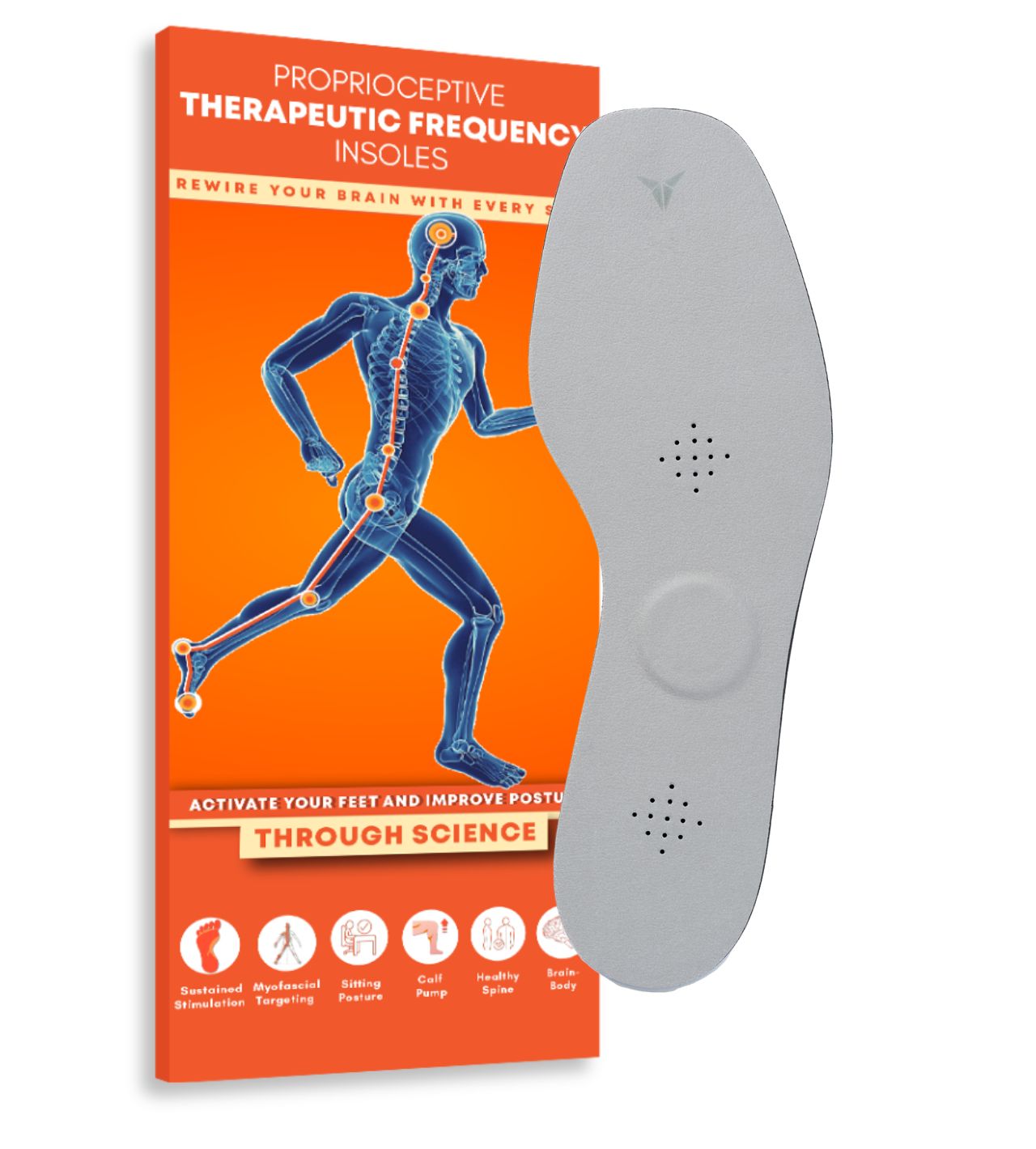Conquer SI Joint Pain: Proven Solutions for Lasting Relief
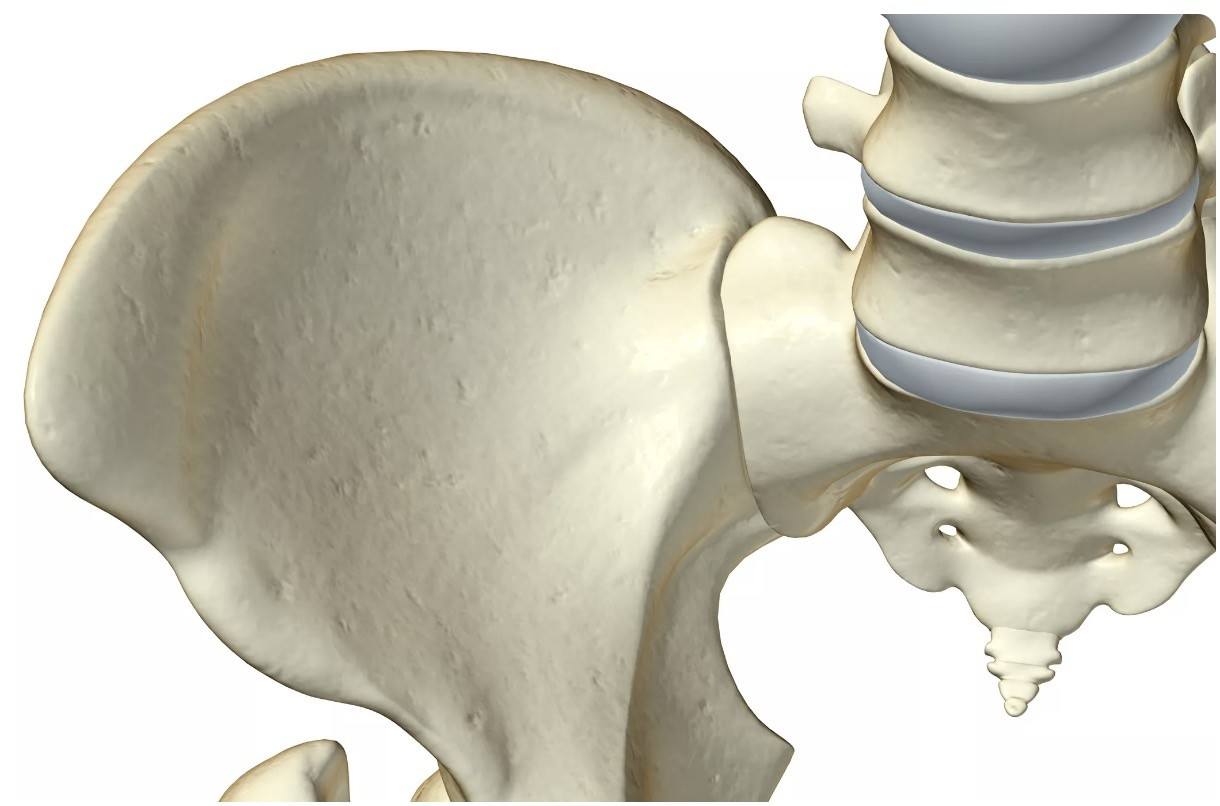
Did you know that eight out of 10 Americans will experience back pain at some point in their lives. When you add in shoulder, hip, and other joint pain, we’re all going to deal with pain at some point.
But even after physical therapy, chiropractic, and massage — at least 6 of those 8 will be back in pain within two years.
Why?
Because those treatments address the body — with no regard for the brain.
Your brain directs how you stand, move, and hold alignment, operating unconsciously—just like your heartbeat. When it misinterprets signals from your body, it can lead to imbalances that place pressure on areas like the sacroiliac (SI) joint, a key stabilizer between your spine and pelvis. If this joint becomes misaligned due to postural issues, no amount of massage or bodywork alone will correct the cause of the pain.
What Causes SI Joint Pain?
The sacroiliac (SI) joint connects the spine to the pelvis and plays a pivotal role in maintaining stability. When exposed to uneven weight distribution or postural imbalances, the SI joint can become “stuck,” leading to inflammation and discomfort.
Key contributors to SI joint pain include:
• Foot Posture Issues: Imbalanced feet can tilt or rotate the pelvis, increasing strain on the SI joint.
• Weak Core Muscles: A weak core destabilizes the pelvis, reducing the SI joint’s ability to support the body.
• Brain-Body Communication Errors: When the brain receives inaccurate signals from the feet or eyes, it may direct the body to adopt compensatory postures, further exacerbating pain.
By understanding these underlying causes, we can move beyond symptom management to effectively address and resolve SI joint pain at its source.
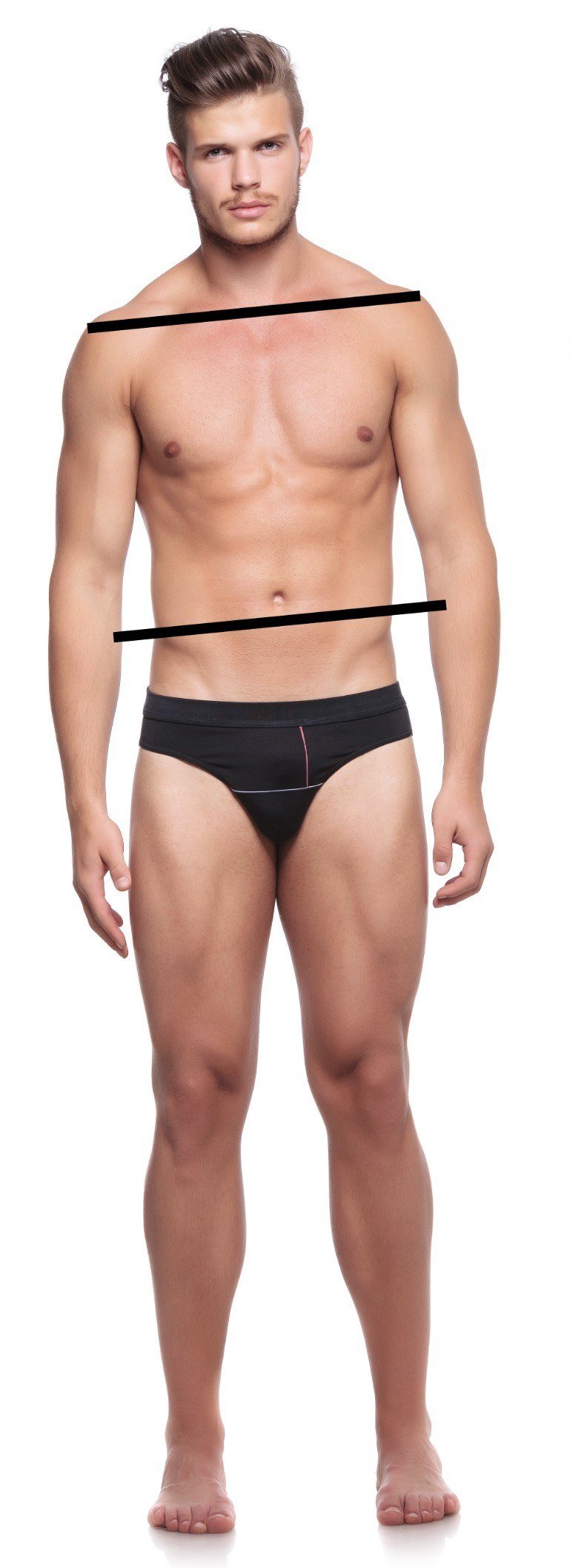
The Importance of Addressing the Root Cause of SI Joint Pain
Most people focus on managing the symptoms of SI joint pain—whether through temporary pain relief methods or isolated exercises—but neglect to consider how underlying imbalances contribute to the issue. The key to long-term relief lies in identifying and correcting the factors that create stress on the sacroiliac joint in the first place.
For instance, imbalances in the feet or hips don’t just affect one area—they create a chain reaction throughout the body. Over time, these misalignments force the SI joint to overcompensate, resulting in stiffness, inflammation, and discomfort. By targeting these root causes through a combination of sensory recalibration and strategic movement, you can unlock your body’s natural ability to heal and restore alignment.
This holistic approach not only alleviates pain but also helps prevent recurring issues, ensuring better mobility and improved quality of life. Let’s dive deeper into the specific causes of sacroiliac pain and explore how to address them effectively.
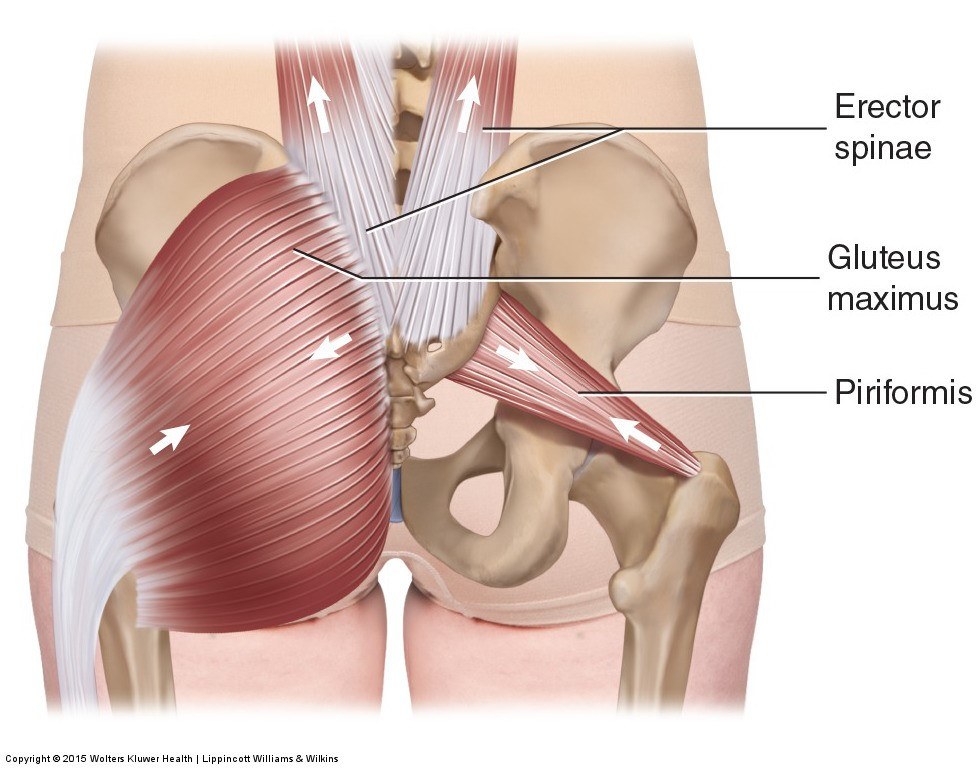
Causes of Sacroiliac Pain: Understanding the Foundation
Sacroiliac (SI) joint pain often surprises individuals by its connection to postural imbalances throughout the body. While the sacroiliac joint itself plays a stabilizing role, the root causes often stem from broader issues in muscular and skeletal alignment. These imbalances place uneven pressure on the pelvis, pulling it out of alignment and causing discomfort or pain over time.
What many don’t realize is that muscle tension on either side of the pelvis is often controlled by the brain’s interpretation of sensory feedback. Your feet, eyes, and overall posture continuously send signals to your brain, which then directs how your body maintains balance. When that sensory input is flawed—such as through instability in the feet or misaligned weight distribution—the pelvis compensates, potentially leading to pain and inflammation in the SI joint.
Test Your Foot Stability: A Quick Assessment
Postural imbalances often originate in the feet, making it essential to assess their stability. Try this simple test:
1. Stand with both feet flat on the ground.
2. Lift one foot off the floor and observe any movement in the supporting foot.
3. Does your foot roll inward or outward? Repeat with the other foot.
These subtle shifts can reveal imbalances that ripple up to the pelvis and SI joint, contributing to chronic pain. Recognizing and addressing these misalignments early is the first step to restoring stability and reducing strain on the SI joint.
Exercises to Unlock and Support Your SI Joint.
1. Balance Your Foot Posture
Improving foot posture is a crucial first step in promoting SI joint health. Misaligned feet destabilize the lower body, putting unnecessary strain on the SI joint. Incorporate these strategies to create a stable foundation:
• Therapeutic Insoles: Posturepro’s insoles stimulate foot receptors, enhancing muscle tone, alignment, and stability. These insoles encourage proper weight distribution, reducing strain on the pelvis.
• Foot Proprioception Exercises: Practice single-leg balance exercises or use a wobble board to activate and strengthen the small stabilizing muscles in your feet. Aim for 30 seconds on each foot, gradually increasing time as your balance improves.
2. Gentle Movements to Release SI Joint Tension
Simple exercises, like the Pubic Symphysis Release and Knee-to-Chest Stretch, help release tension in the SI joint. These gentle movements reduce strain and can unlock stuck joints.
3. Posturepro’s Brain-Based Alignment Technique
Our brain-based alignment approach corrects SI joint imbalances by recalibrating how sensory inputs from the feet, eyes, and jaw influence posture. This unique method improves alignment and reduces strain on the SI joint.
4. Strengthen the Core
A strong core stabilizes the pelvis, reducing the likelihood of SI joint misalignment. Incorporate exercises like Planks and Glute Bridges to build strength and support pelvic stability.
5. Targeted Stretches for SI Joint Relief
Stretching muscles around the SI joint releases tension and aids alignment. Effective stretches include:
- Figure Four Stretch: Lie on your back, cross one ankle over the opposite knee, and gently pull the opposite thigh toward your chest.
- Side-Lying Quad Stretch: Lie on one side, bend the top knee, and pull the ankle toward your glute.
Reset Your SI Joint with 3 Popular Movements
1) Pubic Symphysis
While in the supine position with your knees bent and your feet flat on the floor, place a softball or rolled up pair of socks between your knees. Very gently squeeze for a count of 5 and then slowly release. Do about 3-5 of these, but let your pain be your guide. In other words, stop if it hurts.
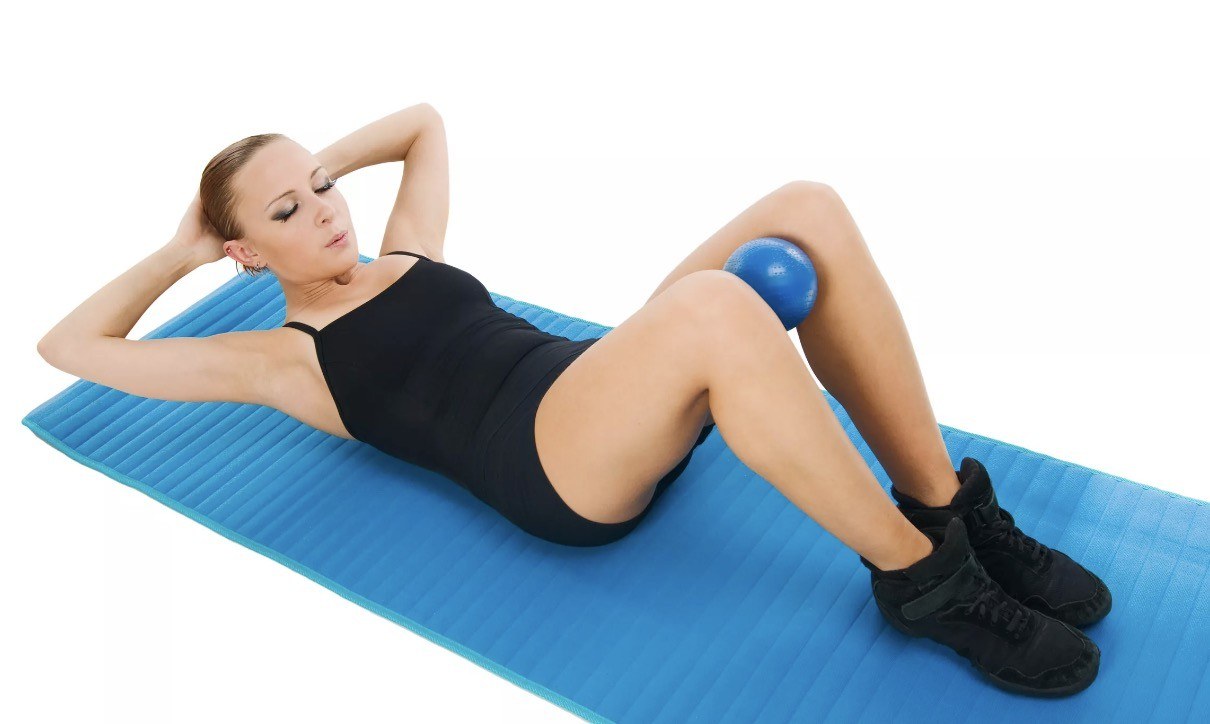
Taking the tension out of your quadriceps muscles may help alleviate some of your SI pain. In the image above, the model is demonstrating the easiest type of quadriceps stretch, where you lie on one side and grasp your foot, ankle or even your shin behind you, then gently pull it toward you.
If you can’t reach, consider using a strap or belt around your foot to extend the reach space.
This position is not for everyone. If you are not used to exercising and you have SI joint pain, you may want to forego the side lying quad stretch as the position, more so than the stretch itself, may stress the joint. The side lying stretch is for beginners.
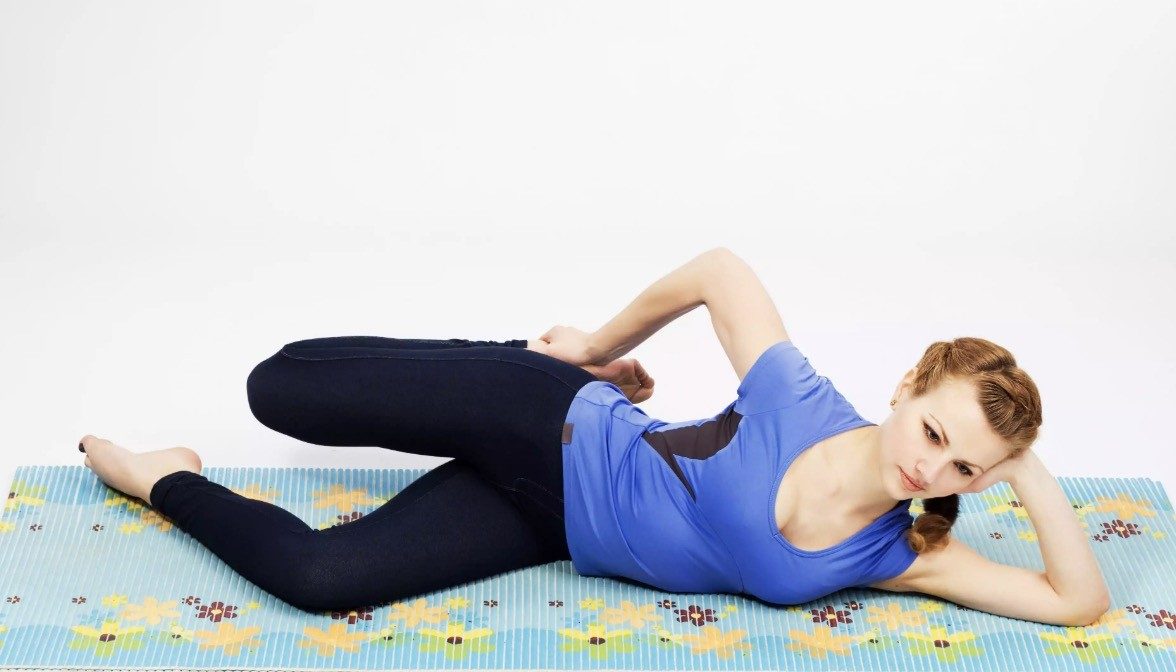
Stretching the outer hip muscles,1 which are the opposing muscles to the inner thighs, may indirectly have the same effect as adduction, albeit in a less intense way. Plus, it can help release chronic tension that may be at least partially responsible for routine SI joint misalignment.
Pull your knees to your chest. If you’re back is up for it, which in part may be a matter of strong ab muscles, try the double knees to chest exercise.
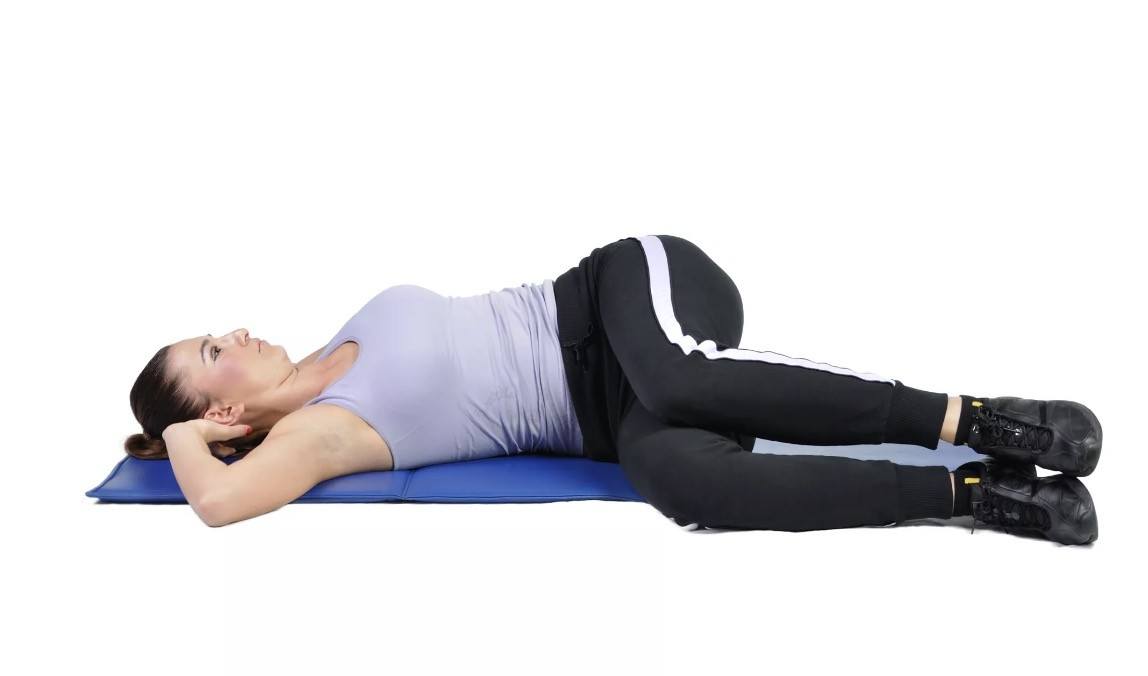
Transform Your Posture and Unlock Your SI Joint
Struggling with discomfort or misalignment? The solution starts with your feet. Poor foot mechanics can create imbalances that impact your posture, gait, and even your SI joint. Therapeutic Insoles are designed to restore proper foot engagement, improve alignment, and optimize your gait cycle—all from the ground up.
By addressing foot mechanics, you’ll:
✔️ Reduce strain on joints, including the SI joint.
✔️ Improve posture and overall body symmetry.
✔️ Move with greater confidence and ease.
Ready to take the first step? Transform your posture with Therapeutic Insoles:
👉 Discover Therapeutic Insoles that improve your posture here.
Recommended Solution for SI Joint
Therapeutic Insoles are designed to engage your body’s natural posture mechanisms, starting from the feet. With a unique design that stimulates foot receptors, these insoles help correct foot alignment, providing a stable foundation for the entire body. They work to support balanced weight distribution and activate muscles that promote better posture, reducing strain and discomfort from the ground up. Ideal for anyone looking to improve Sacroiliac (SI) joint pain.
References:
Day, B. L., Steiger, M. J., Thompson, P. D., & Marsden, C. D. (1993, September). Effect of vision and stance width on human body motion when standing: Implications for afferent control of lateral sway. Retrieved from https://www.ncbi.nlm.nih.gov/pmc/articles/PMC1143881/
Kavounoudias, A., Roll, R., & Roll, J. P. (2001, May 01). Foot sole and ankle muscle inputs contribute jointly to human erect posture regulation. Retrieved from https://www.ncbi.nlm.nih.gov/pmc/articles/PMC2278585/
Oyarzo, C. A., Villagrán, C. R., Silvestre, R. E., Carpintero, P., & Berral, F. J. (2014). Postural control and low back pain in elite athletes comparison of static balance in elite athletes with and without low back pain. Retrieved from https://www.ncbi.nlm.nih.gov/pubmed/23963269
Shaikh, A. G., & Zee, D. S. (2017, December 19). Eye Movement Research in the Twenty-First Century-a Window to the Brain, Mind, and More. Retrieved from https://link.springer.com/article/10.1007/s12311-017-0910-5
Wang, Z., & Newell, K. M. (2012, September 19). Asymmetry of foot position and weight distribution channels the inter-leg coordination dynamics of standing. Retrieved from https://link.springer.com/article/10.1007/s00221-012-3212-7
Nejati P, Safarcherati A, Karimi F. Effectiveness of Exercise Therapy and Manipulation on Sacroiliac Joint Dysfunction: A Randomized Controlled Trial. Pain Physician. 2019;22(1):53-61.
Tamer S, Oz M, Ulger O. Effects of sacroiliac joint mobilization on hamstring muscle flexibility and quadriceps muscle strength. Orthop J Sports Med. 2014 Nov; 2(3 Suppl). doi:10.1177/2325967114S00174
What is SI joint syndrome and how does it affect the body?
SI joint syndrome occurs when the sacroiliac (SI) joint, located between the spine and pelvis, becomes irritated or inflamed. This condition often results from misalignments such as a rotated pelvis, which places uneven stress on the SI joint. Over time, this can lead to pain, stiffness, and limited mobility. Using therapeutic insoles can help correct these imbalances by stabilizing the foundation of your posture. By realigning the pelvis, insoles reduce unnecessary strain on the SI joint, providing relief and improving overall body mechanics.
What are the most effective SI joint pain treatments?
SI joint pain treatment often includes a combination of targeted exercises, gentle stretches, and therapeutic interventions. Incorporating brain-based approaches, like improving body alignment and muscle activation, can provide long-term relief. Consistency with treatments is key to managing pain effectively.
Which SI joint stretches can help reduce pain?
Specific SI joint stretches, such as gentle hip openers, knee-to-chest exercises, and pelvic tilts, can alleviate tension in the area. These stretches improve flexibility, reduce inflammation, and restore proper function to the SI joint. Practicing these daily can help you regain mobility and reduce discomfort.
What are the symptoms of pain over the SI joint?
Pain over the SI joint typically feels like sharp or aching discomfort in the lower back, just above the buttocks. It may worsen with standing, walking, or transitioning from sitting to standing. Pain over the SI joint can also cause muscle tightness and radiating pain into the hips and thighs.
How can I relieve pain from SI joint dysfunction at home?
To relieve SI joint dysfunction at home, focus on gentle movements, posture correction, and restorative exercises. However, if a rotated pelvis is contributing to the dysfunction, therapeutic insoles can play a significant role in realigning your body. By providing proper support to your feet, insoles help stabilize the pelvis and reduce pressure on the SI joint. This combination of exercises and alignment support can improve mobility and reduce pain over time.
What causes SI joint pain, and how can I prevent it?
SI joint pain is often caused by poor posture, repetitive stress, muscle imbalances, or pregnancy-related changes. Prevent it by maintaining an active lifestyle, performing core-strengthening exercises, and ensuring proper body alignment. Addressing the root causes of dysfunction is key to avoiding recurring SI joint pain.
How long does it take for SI joint pain treatment to work?
The time required for SI joint pain treatment to show results varies depending on the severity of the condition and consistency with exercises or therapies. Many people notice improvement within a few weeks with targeted stretching, movement corrections, and posture-focused solutions.
How can I tell if I have SI joint syndrome instead of general back pain?
SI joint syndrome pain often feels sharp or dull near the lower back and pelvis, worsening with movement. Unlike general back pain, SI joint pain may intensify with standing, walking, or weight-bearing activities. Consulting a professional to confirm SI joint syndrome can help identify the right treatment plan.
Is pain from the SI joint a long-term condition?
Pain from the SI joint can become chronic if left untreated or if the underlying causes aren’t addressed. However, with consistent stretching, proper alignment, and targeted therapies, SI joint dysfunction can be managed effectively, allowing you to live pain-free and restore optimal mobility.
